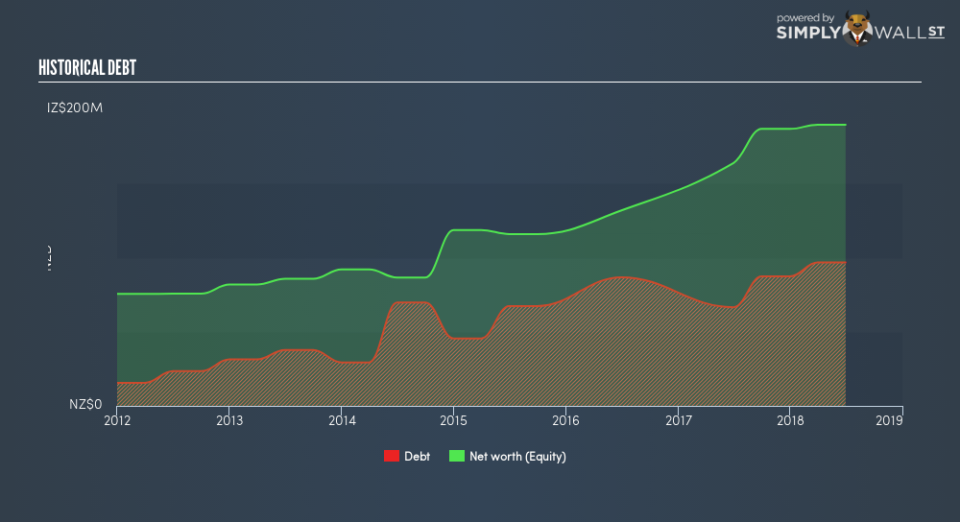How Financially Strong Is Comvita Limited (NZSE:CVT)?

While small-cap stocks, such as Comvita Limited (NZSE:CVT) with its market cap of NZ$259m, are popular for their explosive growth, investors should also be aware of their balance sheet to judge whether the company can survive a downturn. Evaluating financial health as part of your investment thesis is essential, as mismanagement of capital can lead to bankruptcies, which occur at a higher rate for small-caps. I believe these basic checks tell most of the story you need to know. Nevertheless, since I only look at basic financial figures, I suggest you dig deeper yourself into CVT here.
How much cash does CVT generate through its operations?
CVT has built up its total debt levels in the last twelve months, from NZ$67m to NZ$97m , which includes long-term debt. With this rise in debt, the current cash and short-term investment levels stands at NZ$4.9m for investing into the business. Moving onto cash from operations, its operating cash flow is not yet significant enough to calculate a meaningful cash-to-debt ratio, indicating that operational efficiency is something we’d need to take a look at. For this article’s sake, I won’t be looking at this today, but you can take a look at some of CVT’s operating efficiency ratios such as ROA here.
Can CVT meet its short-term obligations with the cash in hand?
With current liabilities at NZ$32m, it appears that the company has been able to meet these commitments with a current assets level of NZ$200m, leading to a 6.29x current account ratio. Having said that, a ratio greater than 3x may be considered by some to be quite high, however this is not necessarily a negative for the company.
Does CVT face the risk of succumbing to its debt-load?
CVT is a relatively highly levered company with a debt-to-equity of 51%. This is not unusual for small-caps as debt tends to be a cheaper and faster source of funding for some businesses. We can check to see whether CVT is able to meet its debt obligations by looking at the net interest coverage ratio. A company generating earnings before interest and tax (EBIT) at least three times its net interest payments is considered financially sound. In CVT’s, case, the ratio of 2.91x suggests that interest is not strongly covered, which means that lenders may be more reluctant to lend out more funding as CVT’s low interest coverage already puts the company at higher risk of default.
Next Steps:
CVT’s high cash coverage means that, although its debt levels are high, the company is able to utilise its borrowings efficiently in order to generate cash flow. This may mean this is an optimal capital structure for the business, given that it is also meeting its short-term commitment. This is only a rough assessment of financial health, and I’m sure CVT has company-specific issues impacting its capital structure decisions. I recommend you continue to research Comvita to get a more holistic view of the small-cap by looking at:
Future Outlook: What are well-informed industry analysts predicting for CVT’s future growth? Take a look at our free research report of analyst consensus for CVT’s outlook.
Valuation: What is CVT worth today? Is the stock undervalued, even when its growth outlook is factored into its intrinsic value? The intrinsic value infographic in our free research report helps visualize whether CVT is currently mispriced by the market.
Other High-Performing Stocks: Are there other stocks that provide better prospects with proven track records? Explore our free list of these great stocks here.
To help readers see past the short term volatility of the financial market, we aim to bring you a long-term focused research analysis purely driven by fundamental data. Note that our analysis does not factor in the latest price-sensitive company announcements.
The author is an independent contributor and at the time of publication had no position in the stocks mentioned. For errors that warrant correction please contact the editor at editorial-team@simplywallst.com.

 Yahoo Finance
Yahoo Finance 
